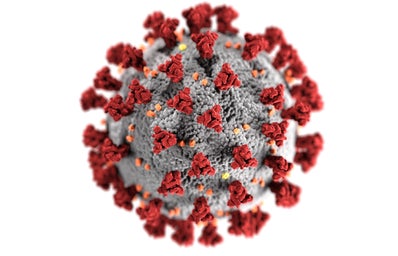Common in Africa, Monkeypox worries the global scientific community since it appeared in several countries where its transmission did not occur. With three confirmed cases in Sao Paulo and more than twenty countries outside the African continent, the severity of the conditions and transmissions are a warning.
The disease caused by the Monkeypox virus began to be recorded in the second week of May and the sequencing of the virus was carried out on May 19. According to the scientific journal Nature, the number of cases detected outside Africa has already exceeded those recorded in the last 50 years. Hence the need to monitor and contain the virus, despite this being done for decades, only on a smaller scale.
Monkey Smallpox X “Human” Smallpox
Monkeypox is a more “quiet” relative of human smallpox. The disease´s initial picture can be malaise, headache, and body ache, in addition to fever. A few days later, skin lesions start to appear.
These injuries occur due to swelling of the nodes – lymph nodes in the neck, groin, and armpits – and it is at this time that transmission is greatest. But like most illnesses caused by viruses, cases usually are solved within weeks.
Even so, Monkey Smallpox can be fatal to patients with compromised immune systems. It can have more lethal consequences when compared to the most severe versions of human smallpox, which killed up to 30% of those infected. However, the human disease was eradicated in 1977, thanks to mass vaccination. Still, an estimated 300 million people have died throughout history.
Monkeypox X Covid-19
Although not very comparable, covid-19 is made of RNA, while Monkeypox is made of DNA, a more stable molecule, less transmissible and, therefore, less likely to mutate.
In addition, Monkeypox is heavier and larger, which prevents the virus from hanging in the air for so long or traveling in particles like the coronavirus. That is, its ability to spread is less, when compared to COVID.
It’s not a new disease
Discovered in 1958 in a colony of laboratory monkeys in Denmark, Monkeypox was not recorded until 1970 in humans in Congo. The country in the current outbreak concentrates the most significant number of cases.
In some African nations, the disease is already considered endemic. What also calls attention is the fact that it only became a global agenda when it reached European countries.
Medicines and vaccines against other diseases help
The human smallpox vaccine offers protection. According to previous data recorded on the African continent, the effectiveness in prevention reaches 85%. However, this immunizing has not been used for more than four decades.
Antivirals used against other diseases are being tested, but none of the three current options – cidofovir, brincidofovir, and tecovirimat – are registered in Brazil. And it is still necessary to wait for them to be tested in humans.
Smallpox appears to occur in skin-to-skin contact
According to the WHO (World Health Organization), the main way to get infected is through close contact with someone infected, by bodily fluids. The sexual route is still in the research process, but so far it seems to be a matter of physical proximity like all the others.
The incubation period of the diseases varies from five to twenty-one days, which may explain their spread throughout the world. Since someone who traveled infected may not have the disease manifesting itself, you can be diagnosed in another country.
With 17 current confirmed cases in Brazil, Anvisa (National Health Surveillance Agency) suggests using masks and social distancing so far. Finally, there are no reasons for alarmism, this being a matter for scholars and health professionals, who are learning to deal with the scenario and its differences.
——————————————
The article above was edited by Lorena Lindenberg.
Liked this type of content? Check Her Campus Cásper Líbero’s home page for more!


